Recently we released our State of the American Renter Report for 2020, which surveyed more than 14,000 of our users, and this post dives deeper into the behaviors and thoughts behind the typical Bay Area Renter this year as well as general rental market trends.
A Year of Unprecedented Price Declines
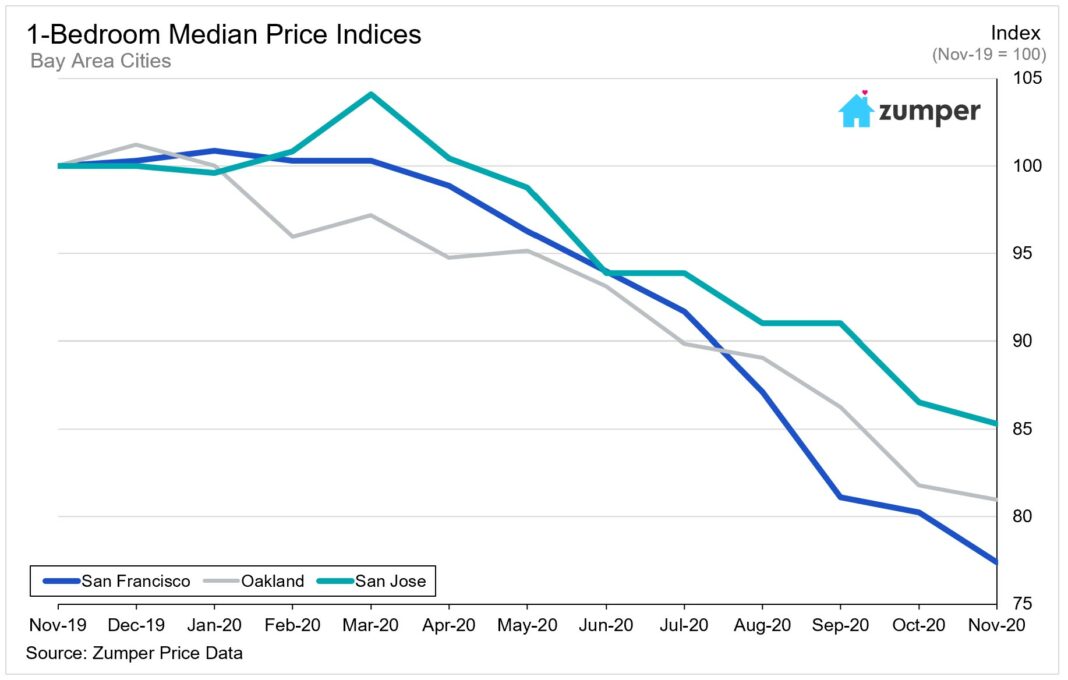
The San Francisco Bay Area experienced historic price decreases over the last year. As of November 2020, the median 1-bedroom price in San Francisco has decreased 22.6% from a year ago. In Oakland and San Jose, that median price has decreased 19.0% and 14.7%, respectively. Decreases have slowed somewhat in recent months compared to the Summer and Fall, but there’s no reason at this point to believe that decreases won’t continue in the short term.
Migration Inflows and Outflows Both Trending Upwards
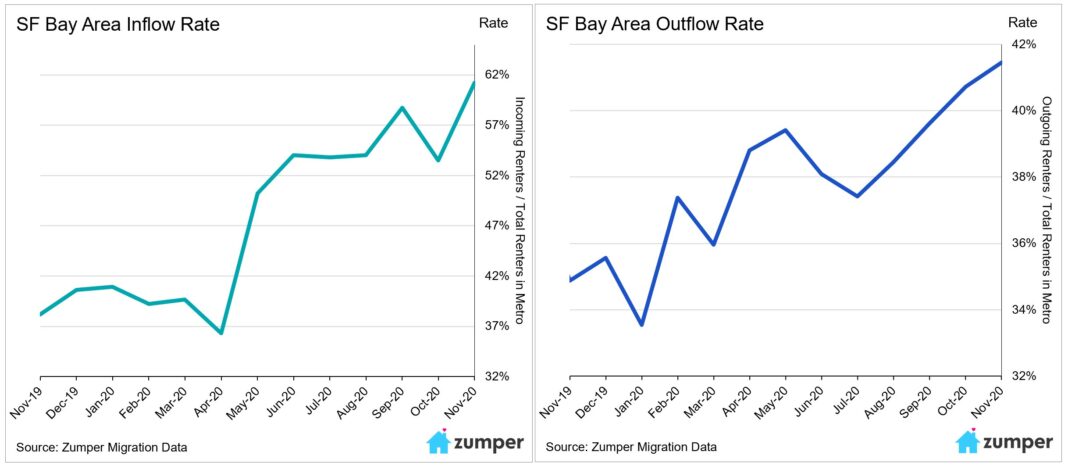
There has been a mass exodus of renters out of the Bay Area in 2020, but there has also been a growing interest in new renters moving in to replace them. Rental prices are highly correlated with migration rates in the short term since migration essentially represents demand and the supply of rental units is slow to change (due to the time and cost of constructing new units). Renters likely started abandoning the Bay Area due to lifestyle changes brought on by the COVID-19 pandemic, which caused prices to decline dramatically. As Bay Area prices decreased, there was a subsequent increase in new renters interested in moving in. These new renters likely considered the Bay Area too expensive prior to these historic decreases, but are considering moving in now that rents are discounted. There are still likely many more renters leaving the Bay Area than there are new ones coming in to replace them since prices are still declining, but if enough new renters start to move in then decreases will stop rents could start rising again.
Where Bay Area Renters are Moving to and from
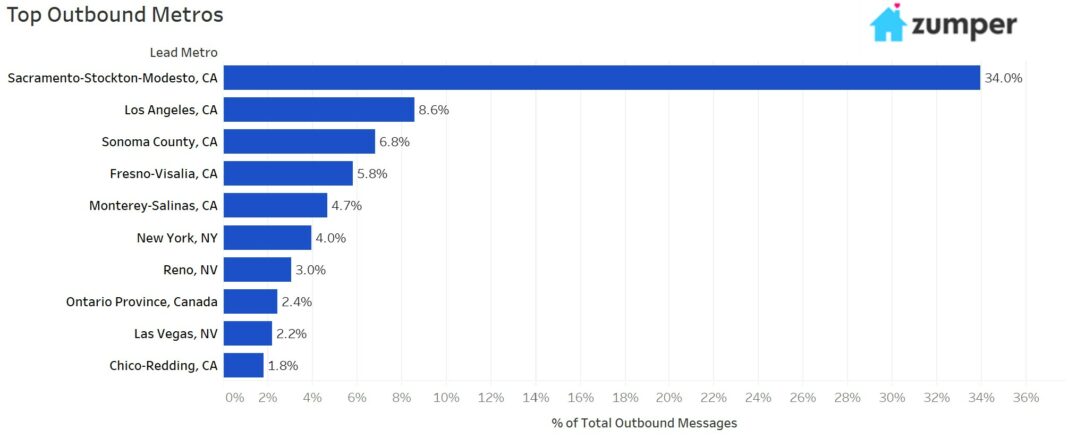
There has been an unprecedented migration of renters out of the Bay Area in 2020, but where are they moving to? According to Zumper’s migration data, Bay Area renters are largely interested in moving to nearby, somewhat cheaper locations. The Sacramento-Stockton-Modesto, CA metro area accounted for 34% of outbound messages sent from Bay Area renters in 2020, so this location was by far the most popular destination for Bay Area renters.
The popularity of other metro areas drops off dramatically after Sacramento-Stockton-Modesto, but these locations still provide some insights. For instance, 6 of the top 10 destination metros are in California, and the top 5 are all in California. Of the remaining 4, 2 of them- Reno and Las Vegas- are just outside California. So it seems that renters that have abandoned the Bay Area are not moving very far. In fact, the only destinations in the top 10 significantly far away from the Bay Area are New York, NY and Ontario Province, Canada, which are the 6th and 8th most popular destination for outgoing Bay Area renters, respectively.
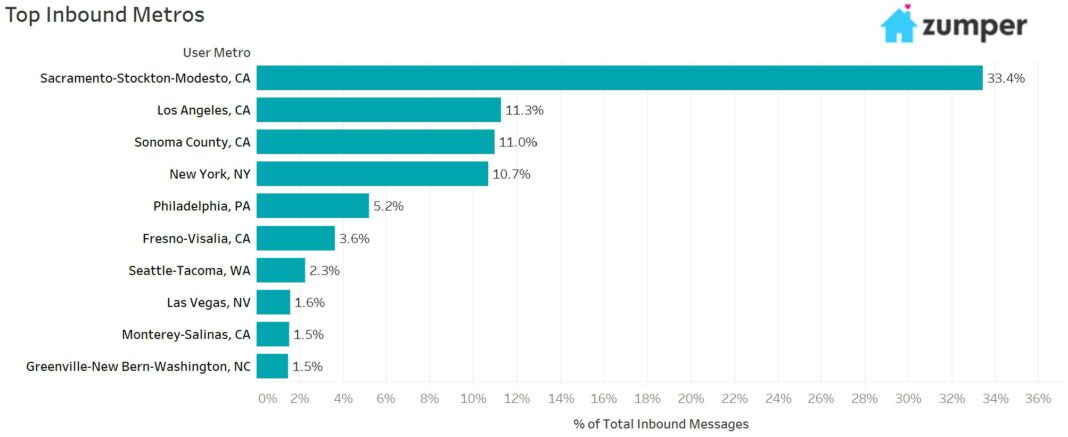
In terms of the surge of new renters interested in moving into the Bay Area, many of them are again coming from nearby locations, but there are some differences from the outbound list. The Sacramento-Stockton-Modesto metro was by far the top location that inbound renters to the Bay Area were coming from. This metro accounts for roughly the same share of inbound messages to the Bay Area as it does for outbound messages from the Bay Area. This implies that there is a very large migration of renters occurring between the Bay Area and the Sacramento-Stockton-Modesto metro. This is to be expected given that Sacramento-Stockton-Modesto is the closest metro to the Bay Area of significant size, but what is interesting is that this migration flow is not one-sided; there are many renters moving between these areas in both directions.
In terms of other metro areas that renters are moving to the Bay Area from, the share of inbound messages drops significantly after Sacramento-Stockton-Modesto, and many are in California- features that are both shared with the outbound list. However, there are a few inbound metros that are far away, namely: New York, NY; Philadelphia, PA; Seattle-Tacoma, WA; and Greenville-New Bern-Washington, NC. The only metro on this list that also appears on the outbound list is New York, NY. This means that renters that are coming to the Bay Area from further away are coming from different locations than where current Bay Area renters are interested in moving to.
How do Bay Area Renters Differ from the Rest of the Country?
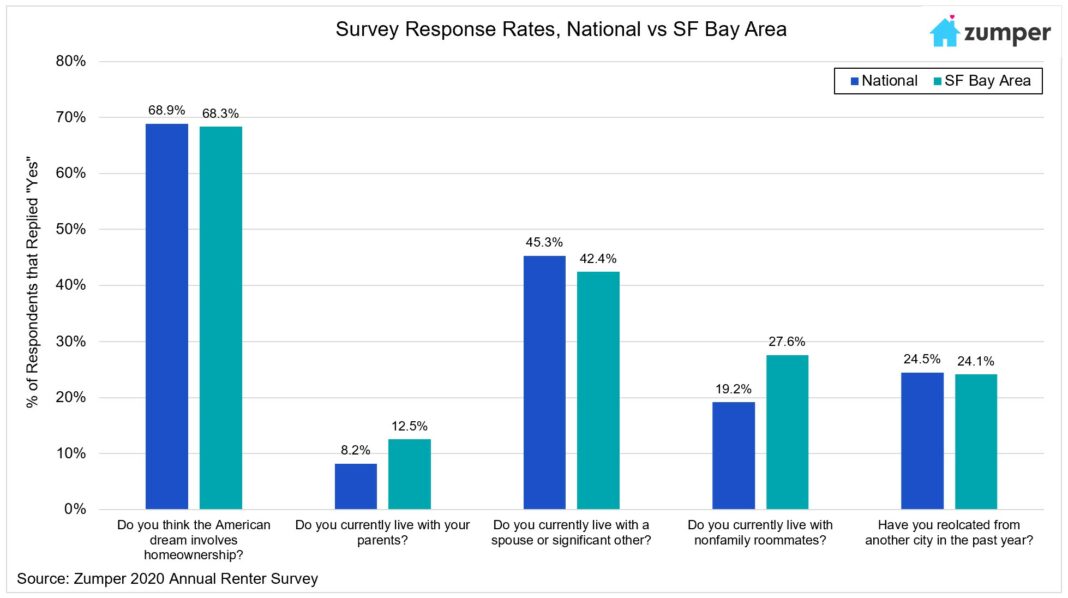
Bay Area renters differed from renters in the rest of the country in 2020 in a few ways. The most significant difference is likely in Bay Area renters’ roommate situations. Bay Area renters reported higher rates than renters nationally in both living with their parents and living with roommates in general (top chart). This likely speaks to the exorbitant cost of rent in the Bay Area that has forced renters to find ways to save like moving in with family or sharing a living space with more people. Bay Area renters also reported living with a spouse or significant other at a lower rate than renters nationally, which may be influenced by the generally younger, more transient population of the Bay Area.
Another significant difference between Bay Area renters and renters nationally is how much they save. In general, Bay Area renters reported saving higher percentages of their pre-tax income than renters nationally (bottom chart). This may be surprising given how high rental prices are in the Bay Area, but renters here also have much higher incomes than renters do nationally, which could be an explanation for this phenomenon.
In terms of homeownership, Bay Area renters reported a slightly lower rate of believing that it was integral to the American Dream, which could be a reflection of exorbitant Bay Area housing prices. Lastly, Bay Area renters reported moving cities at a slightly lower rate than renters nationally, which is consistent with the net outflow or renters leaving the Bay Area that occurred in 2020.
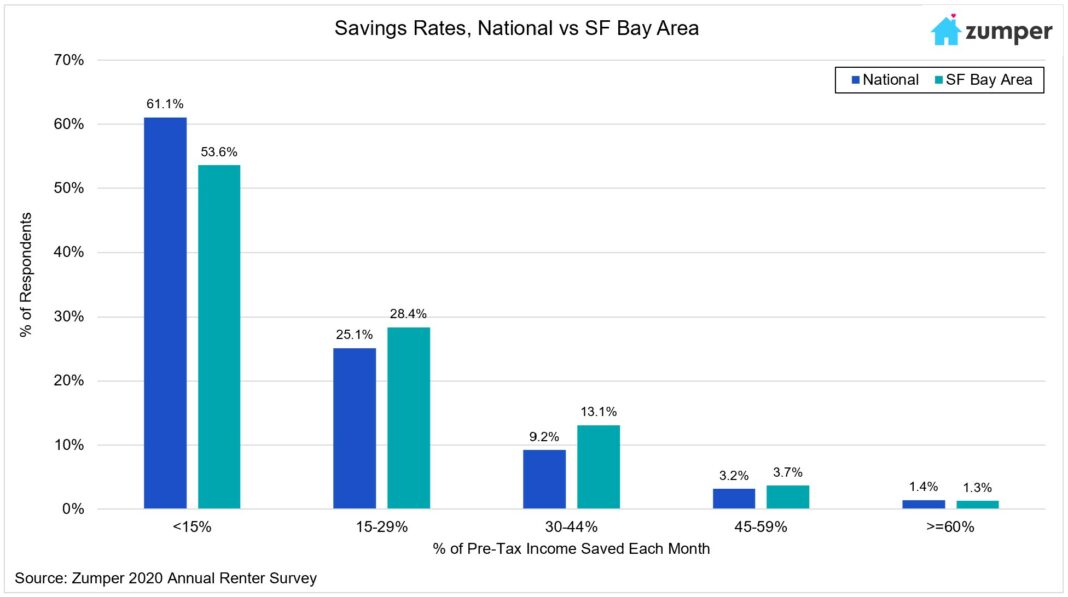
Conclusions
The State of the San Francisco Bay Area renter has changed dramatically over the course of 2020. There is no other rental market that has taken as large of a hit in terms of price, and few that have seen a similar amount of renters abandon it. While rental prices are at the lowest they have been since Zumper started tracking rental price data in 2014, Bay Area cities still comprise some of the most expensive rental markets in the country. Renter behavior in 2020 clearly reflects the expensive prices in the Bay Area. After the COVID-19 pandemic came in full force to the US in March 2020, many Bay Area renters likely either could not afford or justify the price they were paying and opted for cheaper, often neighboring locations.



